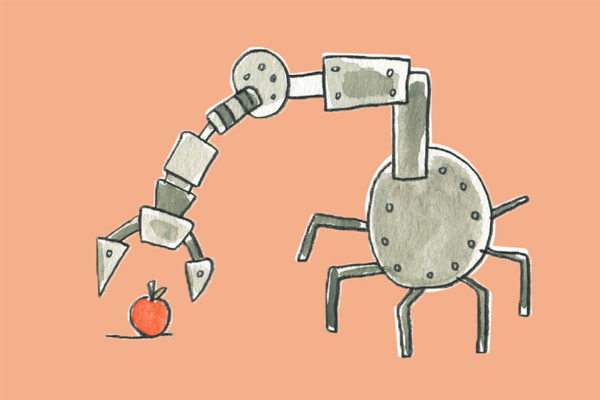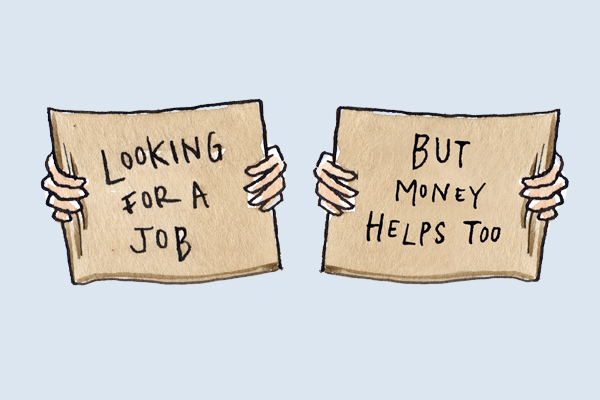The rising interest in Basic Income, and its being put on the political agenda in countries ranging from Canada to South Africa to to Finland, is driven by a number of economic and political factors. There remain the old concerns about the administrative costs and paternalism of welfare bureaucracies, and these have been joined by observations about the increasing precariousness of the labor market, caused in part by increased automation, the growth of the informal labor sector in both the Global North and Global South and the sense that, at least at a global level, the old problem of economic scarcity may have been overcome.
Basic Income, from this perspective, represent a potential way of dealing with the fallout of massive changes within the economic structure of countries whilst also allowing individuals to retain autonomy and acting in contrast to the often-homogenizing biopolitical structures of the post-World War II Western welfare states. It is also argued that its very simplicity imbues the program with a flexibility which would allow it to work in a wider variety of economic and political contexts. Recently, both the province of Ontario in Canada and the nation of Finland have experimented with welfare delivery reforms in the direction of basic income, whilst in South Africa there is wide-ranging social push for implementation of a basic income grant program.
This rising interest has, however, led to a number of questions from both skeptics of basic income and those open to it. A number of such concerns could be classified as practical matters which are particular to the political and bureaucratic systems of each particular government concerned with implementation. There is also another set of questions which concern the basic income project at a more general level, which could be classed as pertaining to the philosophical and ontological underpinnings of such a policy.
The Subject Complication:
To begin with, there is the problem of exactly whom the basic income will apply to; in other words, what is the subject for claims to social justice in the world of basic income. In most formulations, from Thomas Paine forward, a basic income is conceived of as having a condition of citizenship attached to it. Though this would be a relatively straightforward in a world of limited interstate migration, the reality is that individuals and families currently exist in a wide variety of positionalities vis-à-vis the state in which they physically inhabit. In addition to citizens, there are permanent residents, refugees, students on visas, temporary foreign workers and more. The danger with a citizenship-conditional basic income, as it is unlikely that every country would implement such a policy at the same time, and certainly not at the same monetary level, is that it would further deepen the divide between citizen and non-citizen inhabitants of particular countries.
There is, of course, a counter-proposal, of opening basic income to all living within a country, regardless of status. However, given the already fraught nature of immigration and integration policy, this would most likely prove politically damning of both the government who implemented the policy and Basic Income itself.
The Scarcity Complication:
This points to another potential issue with basic income, namely, that of scarcity. The compulsion to work in order to receive income, either within the market in a capitalist society or in some other arrangement, such as a communal obligation or kinship system in a non-capitalist one, has traditionally been justified on grounds of resource scarcity. In essence, the idea that one must contribute one’s labor or resources, adding to the overall “pie” of the society, in order to make a claim on taking resources out later on.
However, in practice, societies tend to exempt certain classes of people from the labor compulsion, such as the elderly and children, if sufficient resources exist to allow these populations to exist as “free riders” of a sort. The argument for basic income, in relation to the scarcity question, is that, at least at the global level, scarcity has been overcome by technological advances, productivity gains and automation, such that a labor compulsion is no longer strictly necessary.
At the national level, however, even setting aside questions of effective governance and level of citizen trust in government which affect many states, governments may be capable of deploying resources, but not all governments have the same level of resources to deploy. Given the citizenship-focused nature of most basic income projects, the scarcity question will continue to trouble such proposals absent a mass nation-to-nation wealth redistribution or the establishment of a level of transnational government capable of effectively taking on the task of administering such a program.
The Sustainability Complication:
Finally, there is the question of whether or not a basic income program would be sustainable in the political sense in the manner in which the growth of the social democratic welfare state was in the 20th century. The key to this growth of the welfare state, and the notion of decommodified consumption (via free-at-point-of-use services such as health care) was the mobilization of working-class political power resources, primarily trade unions and left-wing parliamentary political parties usually associated with them. By contrast, until very recently, basic income tended to be a subject of interest to academics and policymakers rather than a concrete demand made by a mobilized political power grouping, either in the traditional sense of trade unions and political parties, or in more modern social movements.
To some degree, this may be legacy of libertarian strands of support for basic income which were explicitly aimed at taking down aspects of the welfare state that such movements viewed as their major achievements. With the exception of South Africa, where there was a broad social push for the BIG, that even those social justice movements which exist outside of the traditional social democratic framework have not yet made basic income into a clearly articulated demand. Organizations explicitly concerned with labor issues, such as Fight for 15, have placed emphasis more on rights-at-work and raising wages, rather than a right-to-not-work implicit in at least the progressive, as opposed to libertarian, interpretation of basic income. In a way, this indicates that such organizations may still be stuck, to greater or lesser degrees, in the old social democratic model, with its emphasis on labor rights, albeit with some new elements.
A Way Forward:
With that said, the notion of basic income continues to express a certain truth about the collective stake in the commons and the ability to demand a just share of social wealth, free of restrictions or paternalistic impediments, and without the, increasingly unnecessary, compulsion to engage in the formal labor market. With both the increasing interconnectedness of global economic production, and the increasing precarity of many forms of work, the case for basic income on both moral and practical grounds has rarely been more compelling than it is now.
However, in order for basic income to be implemented in a progressive fashion, a recognition and a concrete convergence of action (as opposed to a notional convergence of interest) must be had between basic income advocates and political movements both of the precariat and the traditional working class. Just as the welfare state of the 20th century was largely built on the political muscle of the workers of its time, if basic income is to be the welfare cornerstone of the 21st, it will need a similarly strong mobilization behind it.
By Carter Vance
Carter Vance has a Masters of Arts from the Political Economy program at Carleton University in Ottawa, Canada. He has also published his work for Jacobin on water rights protests and has written on a variety of topics for publications such as Truthout and Inquires Journal.


